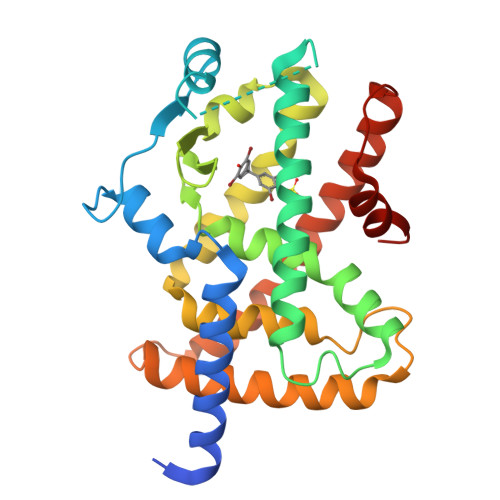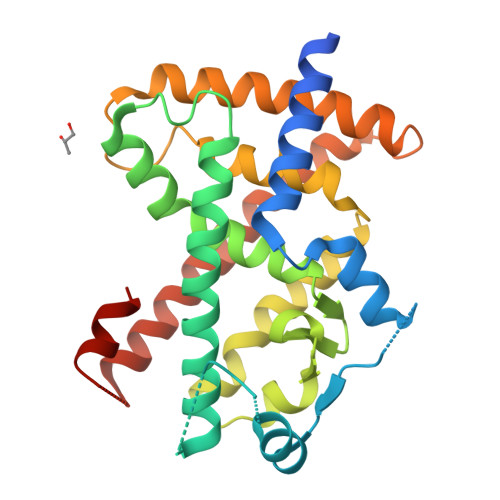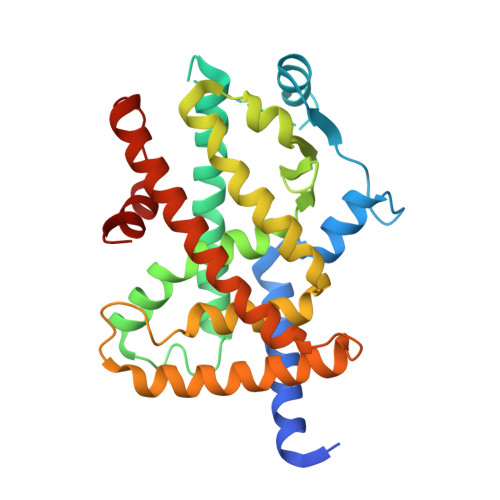Characterization of Novel Ligands of ER{alpha}, Er{beta}, and PPAR{gamma}: The Case of Halogenated Bisphenol A and Their Conjugated Metabolites.
Riu, A., le Maire, A., Grimaldi, M., Audebert, M., Hillenweck, A., Bourguet, W., Balaguer, P., Zalko, D.(2011) Toxicol Sci 122: 372-382
- PubMed: 21622942
- DOI: https://doi.org/10.1093/toxsci/kfr132
- Primary Citation of Related Structures:
3PBA - PubMed Abstract:
The capability of the flame retardants tetrabromobisphenol A (TBBPA) and tetrachlorobisphenol A (TCBPA) to activate peroxysome proliferator-activated receptors (PPARs) α, β, and γ and estrogen receptors (ERs) α and β has been recently investigated, but the activity of their biotransformation products and of their lower molecular weight analogues formed in the environment remains unexplored. The aim of this study was to investigate the relationship between the degree of halogenation of BPA analogues and their affinity and activity towards human PPARγ and ERs and to characterize active metabolites of major marketed halogenated bisphenols. The biological activity of all compounds was studied using reporter cell lines expressing these nuclear receptors (NRs). We used NR-based affinity columns to rapidly evaluate the binding affinity of halogenated bisphenols for PPARγ and ERs and to trap active metabolites of TBBPA and TCBPA formed in HepG2 cells. The agonistic potential of BPA analogs highly depends on their halogenation degree: the bulkier halogenated BPA analogs, the greater their capability to activate PPARγ. In addition, PPARγ-based affinity column, HGELN-PPARγ reporter cell line and crystallographic analysis clearly demonstrate that the sulfation pathway, usually considered as a detoxification process, leads for TBBPA and TCBPA, to the formation of sulfate conjugates which possess a residual PPARγ-binding activity. Our results highlight the effectiveness NR-based affinity columns to trap and characterize biologically active compounds from complex matrices. Polyhalogenated bisphenols, but also some of their metabolites, are potential disrupters of PPARγ activity.
Organizational Affiliation:
Institut National de la Recherche Agronomique, UMR 1331 TOXALIM (Research Centre in Food Toxicology), F-31027 Toulouse, France.





















